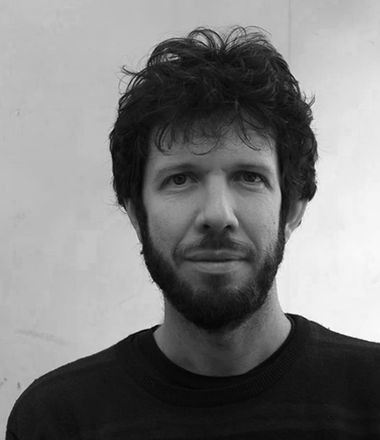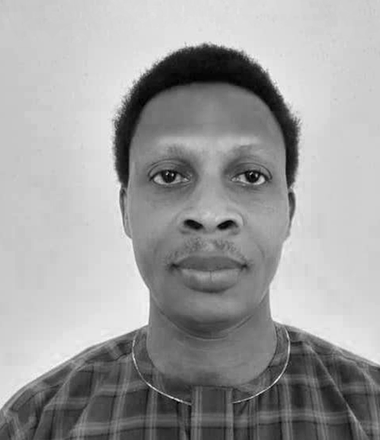In the middle of the Sahara stands a brand new sink. It was paid for by Europe.
A few years ago, a sink like this would have been installed to empower women by giving them access to better sanitation. Before that, it would’ve been framed as a way of improving the lives of young people and preventing them from turning to radical Islam. But in today’s political landscape, the sink is installed to give migrants a place to wash their hands.
Nowadays, anyone seeking development aid money would do well to use the magic word – migration.
Projects that previously focused on “underprivileged youth” now claim to help “potential migrants”. The number of NGOs working on migration-related issues in Africa has skyrocketed. Countless conferences on “migration and development” have been organised, and African universities are suddenly launching “Centres for Migration Studies”. Billions previously earmarked for other development initiatives are now being diverted into migration funds.
Nowadays, anyone seeking development aid money would do well to use the magic word – migration.
Of course, none of this is necessarily problematic. In the world of development aid, buzzwords are nothing new. In the wake of the 9/11 terrorist attacks, “deradicalisation” was suddenly the word on everyone’s lips when it came to funding development programmes. And then there were "sexual violence against women", "good governance", "resilience", "children’s rights". NGOs have to regularly check whether they’re still peppering their funding applications with the “correct” terminology.
But this new buzzword – migration – is different in one fundamental way: the idea that development aid can somehow reduce migration is an illusion. Europe can spend billions, but it won’t stop migration. In fact, experts believe it will do just the opposite. It’s time to put this migration myth to rest.
Measuring the success of development projects by reduced asylum applications
Give 376,000 young Nigerians better access to the labour market, particularly in construction and agriculture. That, roughly, is the goal of the Skills Development for Youth Employment (SKYE) programme, launched by German development agency GIZ. With €58m in funding, SKYE is one of the larger European aid programmes in Nigeria.
On the surface, the SKYE programme seems to have set out to improve the lives of young people in Nigeria.
Which is why we couldn’t believe our eyes when we saw its “main objective”: prevent irregular migration and facilitate migrants’ returns. Any more aims? There’s another subgoal ... to create employment opportunities to prevent irregular migration and facilitate the return of migrants.
The success of a Nigerian employment project will be measured by the number of asylum applications made in Europe.
These are literally SKYE’s only objectives. Nothing else.
Further along in the action document is the “Logframe Matrix”, which is policy-speak for a chart showing how the project’s impact will be measured. According to this matrix, SKYE will be deemed successful if the following target is met: “Reduced number of youth leaving Nigeria on a migration route towards Europe in 2020 ... compared to 2016.” This will be measured in part by the number of asylum applications filed in Europe by Nigerian young people.
Let this sink in for a moment. The success of a Nigerian employment project will be measured by the number of asylum applications made in Europe.
Even if asylum applications were to decrease, how could we possibly know whether this particular project was responsible? Surely it could be due to other factors like, say, a civil war in Libya? Tighter border controls in Niger? More patrols by the European Union (EU)-funded Libyan Coast Guard?
“There’s no logic to projects like this, but we’ve been seeing more and more of them,” says Raphael Shilhav, migration expert for Oxfam International in Brussels.
Because this project is by no means the only one of its kind.
Tackling the root causes of migration
“Tackling the root causes of migration” has become a mantra of sorts for the EU – one it uses to justify spending billions on projects like SKYE. At first glance, it sounds logical: if migration is the result of poverty and a lack of jobs and opportunities in migrants’ home countries, then it can only be stopped by addressing these issues. From a European perspective, this narrative is a win-win for both sides of the political spectrum: tackling poverty will improve the lives of people in developing countries (a win for the left) and decrease migration to Europe (a win for the right).
“It’s a story that appeals to everyone,” says Jessica Hagen-Zanker of the Overseas Development Institute, an influential think tank. “It somehow feels intuitive. If people can’t make a living where they are, they’ll leave, so we need to provide them with a better livelihood if we want them to stay. It seems like common sense.”
The only problem? It’s not true.
Development doesn’t reduce migration (and research proves it)
“Stop spreading the illusion that education and employment projects will reduce migration. The opposite is true. More education, better healthcare and more employment will all lead to more migration, not less.” These were the words of Ton Dietz, former director of the African Studies Centre in the Netherlands, while addressing aid organisations in The Hague at a conference last year.
His seemingly bold view is backed up by research – by academics, governments, think tanks or aid organisations. Experts everywhere seem to agree that development is likely to result in more migration.
Why is that? Well, for starters, migration costs money (which employment projects help people to earn), and people’s dreams and ambitions tend to grow as they become more educated.
But it’s also because the root causes of migration can’t be reduced to a single issue like poverty. Although many African migrants do list economic factors as a reason for migrating, the decision is much more complex than a simple “if I had a job, I wouldn’t migrate”. Research shows that the decision to migrate is extremely complex and context dependent. It is down to a variety of factors, such as freedom, family pressures, inequality, safety, and social networks.
The European Council on Foreign Relations (ECFR) sums it up nicely: “The evidence suggests that development aid has little prospect of reducing migration flows. [...] There is no evidence to support [the] premise that tackling poverty abroad will reduce the incentive to migrate. By increasing people’s skills and aspirations, development aid is likely to encourage migration.”
False narratives hamper progress
You could be forgiven for wondering: what’s the harm in all this? Who cares if we slap a “migration” label on aid programmes, as long as people are getting help?
But this approach to development aid has far-reaching consequences – consequences that will remain obscured as long as we keep pretending that the “tackling the root causes of migration” narrative makes any kind of sense.
The “root causes” mantra has elevated the prevention of irregular migration to a legitimate goal for development cooperation. So much so that the EU’s 2021-2028 budget allocates 10% of an enormous new development fund (the Neighbourhood, Development and International Cooperation Instrument, or NDICI, worth nearly €90bn) to “migration”.
But if your goal is to prevent migration, then there’s no reason to limit development aid to improving education and creating jobs in African countries. Suddenly, that same funding can go towards projects designed to strengthen border controls, help the Libyan coast guard to intercept migrant boats, and introduce biometric passports so that migrants can be identified and sent back more easily.
And that’s exactly what is happening. Our research showed that in Nigeria alone, more than half of all European migration funding goes to border control measures. Not only that, but these types of projects can now be funded using money marked as “development aid”.
But if your goal is to prevent migration, then there’s no reason to limit development aid to improving education and creating jobs in African countries.
But instead of making people less vulnerable to exploitation or poverty, focusing on tougher borders actually leads to more exploitation of migrants and more dangerous migration routes to Europe. For example, migrants journeying from Niger to Libya through the Sahara have long used old caravan trails, which pass through well-known oases in the desert. But these routes are now being patrolled by border guards trained and equipped by the EU, forcing migrants to take new, more dangerous routes through unfamiliar terrain with little access to water.
Tougher borders are not only a danger to migrants, but also hamper economic development throughout west Africa, where people have traditionally moved between countries such as the Ivory Coast, Algeria and Libya in search of work. The vast majority of these migrants have no intention of making the journey to Europe. This phenomenon, known as “circular migration”, is a survival strategy for many young west Africans. They may work in construction in Nigeria during the dry season, then move to Niger during the rainy season to work in the fields, for example.
“In west Africa, borders have always been a fluid concept. Mobility runs in people’s blood,” argues migration scholar Amanda Bisong. In fact, the region boasts an economic union, ECOWAS, and a free movement protocol that predates that of the EU. Bisong says that before the refugee crisis of 2015, talks between ECOWAS and the EU focused on how to make this protocol even more effective. Everyone agreed that increased mobility would lead to greater economic development. “But since 2015 … ” Bisong sighs. “It became crazy. In order to protect free movement in the EU, free movement in west Africa breaks down.”
Development projects that focus on tightening border control in west Africa – things like training customs officers, equipping remote border posts with new software, and instructing police to patrol migration routes – are actually disastrous for development in the region. They prevent west Africans from using the survival strategies they’ve used for centuries. Which means that European development aid designed to “tackle the root causes of migration” isn’t promoting development, but actively undermining it.
A new inconvenient truth
If it’s widely known that development aid does nothing to reduce migration and that focusing on migration actually inhibits development, then why do we continue to spend billions under that pretext?
The simple answer? It’s a convenient narrative for nearly everyone involved.
For left-wing politicians in Europe, it’s a way of putting a friendlier face on migration policy: after all, what could be more heartwarming than creating jobs for underprivileged youths in Africa? For right-wing politicians, it provides a justification for spending money on development cooperation: it’s no longer a form of charity, but a necessity for protecting the European way of life.
The fact that development aid cannot eliminate the causes of migration – at least not in the short term – is the new inconvenient truth.
For African governments, the narrative helps to get more projects funded. Whether or not the projects actually curb migration is of little interest to them, as long as they contribute to growth in the region. “The Nigerian government is eager to receive more funding for employment projects,” says one official in Lagos, who wishes to remain anonymous. “If the EU wishes to call them ‘migration projects’, that’s irrelevant to Nigeria.” West African countries that could use more development aid but are not a major source of migration to Europe joke that they should consider sending more of their people to Europe – then maybe they’d get more help.
And for aid organisations, the narrative is an opportunistic way of providing a fresh impetus to their work, as more funding suddenly becomes available. One German aid worker in charge of a migration project in Nigeria tells us: “I absolutely believe that this project is making a positive difference in this country. Will it reduce migration? I doubt it. But at least this way we get the funding we need.”
The fact that development aid cannot eliminate the causes of migration – at least not in the short term – is the new inconvenient truth.
Something has to be done, right?
The EU’s current migration policy is founded on an illusion – one that causes funding to be allocated to the areas with the most “potential migrants”, rather than those that need the most help. It is an illusion that justifies spending development aid on border control and coast guard patrols. An illusion that restricts the free movement of people and goods in west Africa. An illusion that ultimately threatens economic development in Africa rather than supporting it.
Who will take a stand against this narrative? Some brave people are trying. There are projects devoted to finding better ways to evaluate the relationship between aid and migration, research institutions publishing alarming reports, EU parliament members circulating pamphlets, and aid organisations sounding the alarm and calling on EU governments to change.
“We’re trying to provide people with perspective. What they do with that perspective is up to them,” says Bob van Dillen of aid organisation Cordaid.
However, aid agencies that choose to speak out must walk a delicate line – to continue receiving funding, they will have to go along with the current trend to a certain extent. But how far is too far? We spoke to representatives from a well-known aid organisation that decided to accept money for migration projects, but only if they were not required to track whether the projects reduced migrant arrivals in Europe. It’s admittedly a betrayal of their principles, but what else can they do?
Time and again, we’re told: “We have to show that we’re doing something.”
It seems that virtually nothing can dispel the Great Illusion. The researchers, policymakers and aid workers we spoke to told us that everyone on the inside knows that these migration projects are based on a false premise. Yet for the outside world, the illusion is upheld.
This series has been developed with the support of the Money Trail Project. It was translated from the Dutch by Megan Hershey.
Dig deeper
 What happens to migrants who are sent back? I spent a year following 12 people to find out
We constantly hear about migrants trying to get to Europe but never about what happens to those who are unsuccessful. I followed 12 people after their return from a failed journey.
What happens to migrants who are sent back? I spent a year following 12 people to find out
We constantly hear about migrants trying to get to Europe but never about what happens to those who are unsuccessful. I followed 12 people after their return from a failed journey.
 Borders don’t just keep people out. They define their worth
Most borders are recent inventions, so why can’t we imagine a world without them? They’re historical hangovers that perpetuate suffering and injustice. And they’re not even that effective. It’s time to rethink the importance we give to arbitrary lines on a map.
Borders don’t just keep people out. They define their worth
Most borders are recent inventions, so why can’t we imagine a world without them? They’re historical hangovers that perpetuate suffering and injustice. And they’re not even that effective. It’s time to rethink the importance we give to arbitrary lines on a map.




